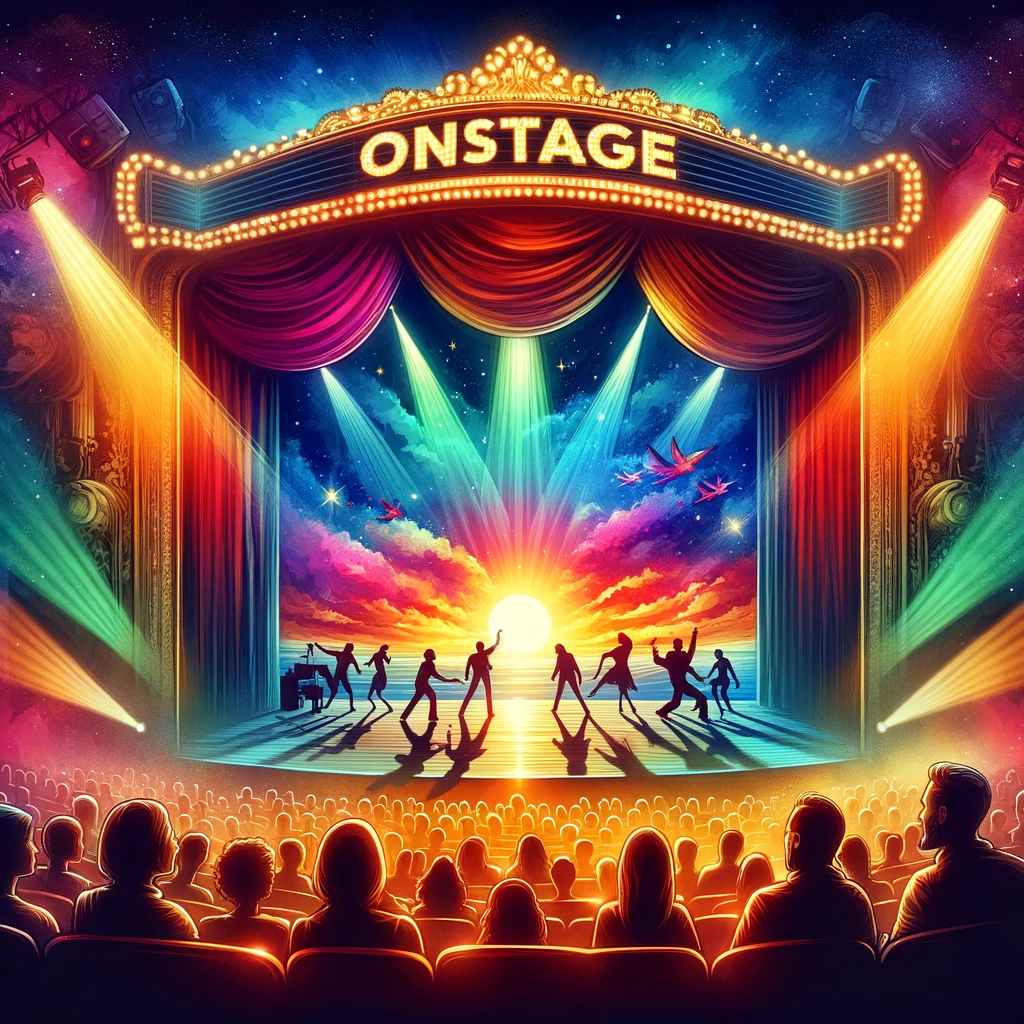In the hushed auditorium, there’s a palpable sense of anticipation. The audience sits at the edge of their seats, waiting for a world to unfold before them as the house lights dim. This is the magic of being “Onstage” – where narratives pulse to life, characters breathe, and every performance is a unique conversation with its audience.
The Alchemy of Live Performance The stage is a crucible where the raw materials of script, direction, and design meld under the alchemist’s touch of the performer. It’s a transformative space where actors like Jasmine Li channel years of training, emotional depth, and a spark of spontaneity into every line delivered. “When I step onto the stage, I carry with me the stories of every character I’ve embodied,” Jasmine reveals. “Each performance is an act of giving life to words, a sacred exchange with the audience.”
The Dance of Dialogue and Movement Theater is not just spoken word but a symphony of movement, a choreography that extends beyond dance into the subtleties of gesture and timing. Choreographer Elliot Ramos watches from the wings as his intricate staging becomes a language in itself. “Movement tells a story that complements the dialogue. It’s about creating a visual rhythm that resonates with the heartbeat of the play,” he explains.
The Resonance of the Ensemble A production is more than its lead roles. It’s an ensemble working in harmony. Actors like Michael Thompson find strength in this unity. “The ensemble is where the energy of a play multiplies. It’s the collective breath before a line that captures the essence of a shared moment,” says Michael. The ensemble onstage is a microcosm of a world, each member vital to the story’s ecosystem.
The Intimacy of the Monologue In contrast to the ensemble’s chorus, the monologue stands as a moment of intimacy, a solo in the orchestra of the play. Performers like Sofia Martinez navigate this space with a blend of vulnerability and power. “In a monologue, I’m not just speaking to the audience; I’m inviting them into the innermost chambers of my character’s mind,” Sofia shares. Each monologue is a trust fall with the audience, a solitary journey shared.
The Thrill of Improvisation Theater also thrives on the unexpected – the thrill of improvisation. Comedic troupes like “The Quick Wits” exemplify this, where performers like Amir Johnson thrive. “Improv is the jazz of theatre,” Amir grins. “It’s all about listening and responding in the moment, the ultimate test of presence.” The laughs are genuine because the surprise is shared equally between the actor and the audience.
The Echo of the Curtain Call As the narrative concludes and the curtain call echoes through the theatre, the connection between performer and audience reaches its zenith. It’s a ritual acknowledgment of the journey shared, the stories told, and the memories created. “The curtain call is a moment of gratitude,” reflects Jasmine. “It’s where we, as actors, thank the audience for lending us their ears, eyes, and hearts.”
Onstage, every emotion is amplified, every gesture significant, and every word a beat in the story’s heart. It’s where the ephemeral becomes tangible, where the invisible thread between actor and audience is woven into an experience that can be as transformative as it is fleeting.
The next time you witness the world of a play come to life, remember that the stage is more than a platform; it’s a portal. It’s where the essence of human experience is distilled into a few precious hours of performance. Onstage is where stories are not just told; they are felt, lived, and breathed in the shared space of the theater.
This article is crafted to capture the essence of what being onstage means for various stakeholders in the world of theatre, from actors and directors to the audience. It celebrates the collaborative art of live performance and the ephemeral beauty of storytelling in the physical space of the theatre.


